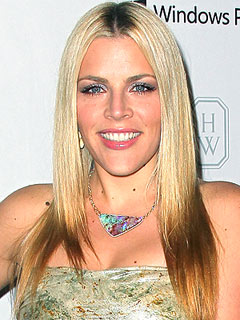NEW YORK (Reuters) - Wall Street's current jubilant narrative is that a rush into stocks by small investors has sparked a "great rotation" out of bonds and into equities that will power the bull market to new heights.
That sounds good, but there's a snag: The evidence for this is a few weeks of bullish fund flows that are hardly unusual for January.
Late-stage bull markets are typically marked by an influx of small investors coming late to the party - such as when your waiter starts giving you stock tips. For that to happen you need a good story. The "great rotation," with its monumental tone, is the perfect narrative to make you feel like you're missing out.
Even if something approaching a "great rotation" has begun, it is not necessarily bullish for markets. Those who think they are coming early to the party may actually be arriving late.
Investors pumped $20.7 billion into stocks in the first four weeks of the year, the strongest four-week run since April 2000, according to Lipper. But that pales in comparison with the $410 billion yanked from those funds since the start of 2008.
"I'm not sure you want to take a couple of weeks and extrapolate it into whatever trend you want," said Tobias Levkovich, chief U.S. equity strategist at Citigroup. "We have had instances where equity flows have picked up in the last two, three, four years when markets have picked up. They've generally not been signals of a continuation of that trend."
The S&P 500 rose 5 percent in January, its best month since October 2011 and its best January since 1997, driving speculation that retail investors were flooding back into the stock market.
Heading into another busy week of earnings, the equity market is knocking on the door of all-time highs due to positive sentiment in stocks, and that can't be ignored entirely. The Standard & Poor's 500 Index <.spx> ended the week about 4 percent from an all-time high touched in October 2007.
Next week will bring results from insurers Allstate and The Hartford , as well as from Walt Disney , Coca-Cola Enterprises and Visa .
But a comparison of flows in January, a seasonal strong month for the stock market, shows that this January, while strong, is not that unusual. In January 2011 investors moved $23.9 billion into stock funds and $28.6 billion in 2006, but neither foreshadowed massive inflows the rest of that year. Furthermore, in 2006 the market gained more than 13 percent while in 2011 it was flat.
Strong inflows in January can happen for a number of reasons. There were a lot of special dividends issued in December that need reinvesting, and some of the funds raised in December tax-selling also find their way back into the market.
During the height of the tech bubble in 2000, when retail investors were really embracing stocks, a staggering $42.7 billion flowed into equities in January of that year, double the amount that flowed in this January. That didn't end well, as stocks peaked in March of that year before dropping over the next two-plus years.
MOM AND POP STILL WARY
Arguing against a 'great rotation' is not necessarily a bearish argument against stocks. The stock market has done well since the crisis. Despite the huge outflows, the S&P 500 has risen more than 120 percent since March 2009 on a slowly improving economy and corporate earnings.
This earnings season, a majority of S&P 500 companies are beating earnings forecast. That's also the case for revenue, which is a departure from the previous two reporting periods where less than 50 percent of companies beat revenue expectations, according to Thomson Reuters data.
Meanwhile, those on the front lines say mom and pop investors are still wary of equities after the financial crisis.
"A lot of people I talk to are very reluctant to make an emotional commitment to the stock market and regardless of income activity in January, I think that's still the case," said David Joy, chief market strategist at Columbia Management Advisors in Boston, where he helps oversee $571 billion.
Joy, speaking from a conference in Phoenix, says most of the people asking him about the "great rotation" are fund management industry insiders who are interested in the extra business a flood of stock investors would bring.
He also pointed out that flows into bond funds were positive in the month of January, hardly an indication of a rotation.
Citi's Levkovich also argues that bond investors are unlikely to give up a 30-year rally in bonds so quickly. He said stocks only began to see consistent outflows 26 months after the tech bubble burst in March 2000. By that reading it could be another year before a serious rotation begins.
On top of that, substantial flows continue to make their way into bonds, even if it isn't low-yielding government debt. January 2013 was the second best January on record for the issuance of U.S. high-grade debt, with $111.725 billion issued during the month, according to International Finance Review.
Bill Gross, who runs the $285 billion Pimco Total Return Fund, the world's largest bond fund, commented on Twitter on Thursday that "January flows at Pimco show few signs of bond/stock rotation," adding that cash and money markets may be the source of inflows into stocks.
Indeed, the evidence suggests some of the money that went into stock funds in January came from money markets after a period in December when investors, worried about the budget uncertainty in Washington, started parking money in late 2012.
Data from iMoneyNet shows investors placed $123 billion in money market funds in the last two months of the year. In two weeks in January investors withdrew $31.45 billion of that, the most since March 2012. But later in the month money actually started flowing back.
(Additional reporting by Caroline Valetkevitch; Editing by Kenneth Barry)










